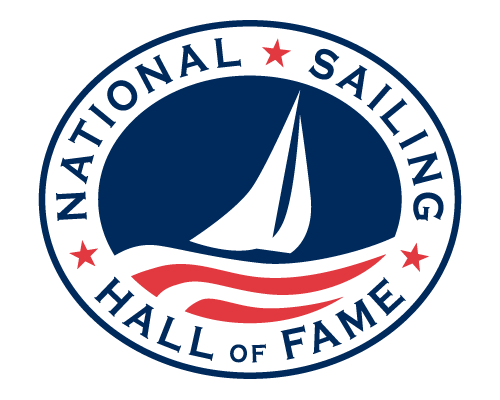
Stephen Colgate
June 25, 1935 -
New York, New York
The 54-foot Frers sloop, Sleuth , rounded Fastnet Rock at 11 p.m. during the brutal 1979 race. By 4 a.m. the wind was clocking 80-85 knots. The seas were large, rife with sudden rogue waves. Sleuth’s crew had taken to their bunks. The navigator was sick. One crewman voiced the general concern: their best course would not fetch Bishop Rock, the next mark. Owner/skipper Steve Colgate was doing most of the steering, also navigating. He had seen a front he thought would provide the lift they needed to fetch the Bishop. “I said `We’re going fast, we have the right sail combination up, we are under control – right? When we have a problem, we will address it. The buck stops here.’ That settled it.” Sleuth got its lift, made the Bishop, and won its class in a race that claimed 15 lives. That dangerous day at sea, Steve Colgate established a rule that is now widely practiced offshore: go below and someone will then unclip your safety line; pass the safety line up and someone will clip you in before you come on deck. Colgate learned to sail in Lightnings and the family Atlantic in Cold Spring Harbor, New York, when he was nine. He was good at it, but the sea didn’t seduce him until he started sailing big boats as a teenager. The 1955 race to Spain on the 72-footer, Mare Nostrum , is when, as he says, “it took me.” He went on to establish a stunning record in a variety of boats – including 5.5- and 12-metres – forging a reputation as a calming influence on board; as a good tactician with excellent judgment. Steve had lucrative career choices. Instead, he applied his calming approach to the Offshore Sailing School he founded in 1964, in New York. From two boats and two instructors, the school now has eight locations and more than 40 Colgate 26s, a highly-regarded boat Steve collaborated on with designer Jim Taylor. He authored a much needed text book on sailing (one of nine books he’s written); required reading for students. “I instinctively set up the school for all types of learning,” Steve says, “visual – the book; audio – instruction; and kinesthetic – on the water. First there’s classroom theory, then we go on the boat and do it, all in three days.” It worked, and it’s still working. Steve Colgate has taught 130,000 people how to sail. – Roger Vaughan
Preserving America’s Sailing Legacy
Engaging Sailing’s Next Generation
Stay Connected to the National Sailing Hall of Fame
